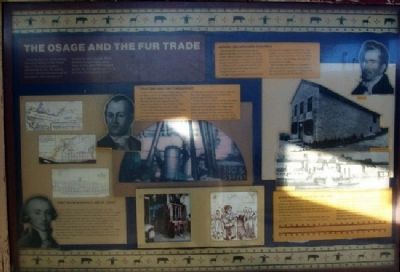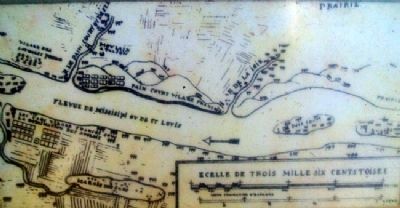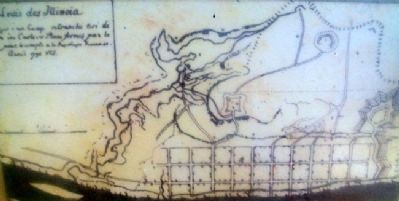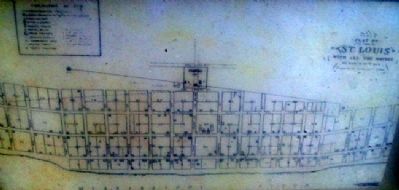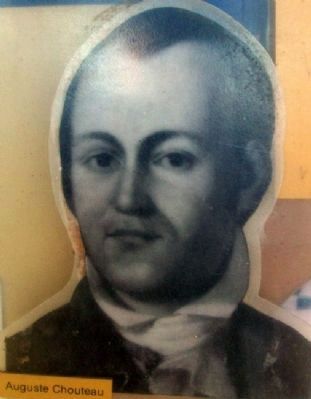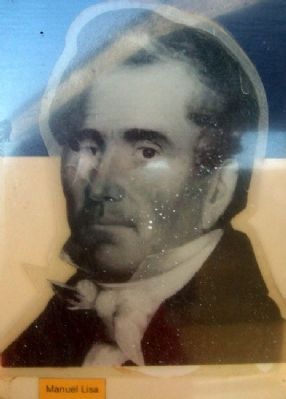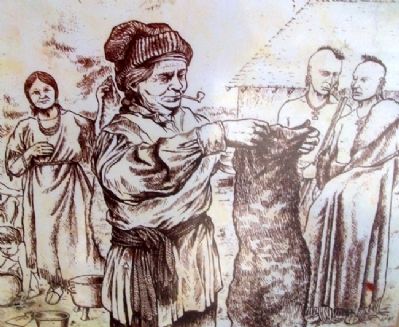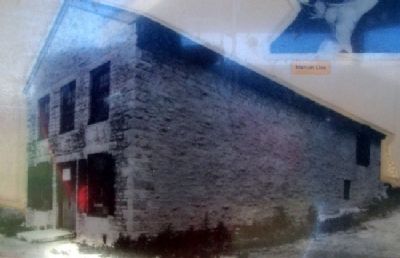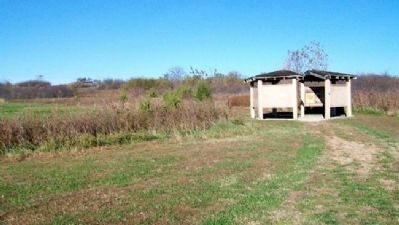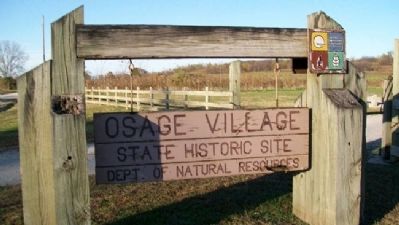Near Fair Haven in Vernon County, Missouri — The American Midwest (Upper Plains)
The Osage and the Fur Trade
Hunting and furs were already important factors in the Osage way of life and Europeans capitalized on this. By trading furs for articles manufactured by Europeans, both groups got something they wanted. While the Indians got kettles, axes, hoes, knives, and other durable goods, the Europeans got furs to sell and often became rich.
First Trade Monopoly and St. Louis
On July 6, 1763, the French governor granted an eight-year trade monopoly to Maxent, Laclede and Company, a New Orleans firm. On August [?], 1763, Pierre Laclede left New Orleans for Spanish Illinois with Auguste Chouteau, his family, and their workmen. They operated out of Fort de Chartes in present-day Illinois. On February 15, 1764, Laclede sent 15-year-old Chouteau to start work on the town that Laclede called St. Louis.
St. Louis quickly became the center of trade for tribes of the upper Louisiana Territory. It was here that tribes received annual gifts. The Indians were made to come to one place so the Europeans could control them. In 1768, Laclede's monopoly was discontinued and licenses were given only on a yearly basis.
Chouteau and Fort Carondolet
In the fall of 1793, Auguste Chouteau began work on a plan to control the Osage by building a fort near the Big Osage village. In April 1794, Chouteau and four Big Osage and two Little Osage chiefs traveled to New Orleans to explain the plan to Governor Baron de Carondolet.
In return for constructing a fort among the Osage at his own expense, Chouteau received a six-year trade monopoly. Chouteau's monopoly of trade with the Osage was no small matter. At the time Chouteau received his monopoly, trade with the Osage represented more than half of the entire fur trade out of St. Louis.
The fort was built in 1795 and named Carondolet in honor of the governor. At first, the presence of the fort had its desired effect. The Osage made peace with the Pawnee and Kansa tribes and began negotiations with the Commanches [sic]. But the peace did not last, and the Osage soon found themselves in conflict with other tribes and settlers.
Manuel Lisa Replaces Chouteau
Manuel Lisa, a St. Louis merchant, tried to establish free trade with the Indians. After failing to break trade monopolies, he petitioned the new governor for Chouteau's monopoly. He promised to relieve the government of the annual payment for militia, and also to build a flour mill. On June 12, 1802, the governor cancelled Chouteau's monopoly and gave it to Lisa.
Chouteau fought back by suing the government and Lisa. He eventually persuaded many of the Osage to move to Three Forks of the Arkansas near present-day Claremore, Okla. Here, he was out of range of Lisa's monopoly and continued his trade with the Osage.
After Chouteau abandoned Fort Carondolet in 1802, it was ransacked. When explorer Zebulon Pike ascended the Osage River in 1806, he noted that almost nothing was left of the fort.
Effects of Fur Trade on the Land
As the Indians became more dependent upon European goods, they had to spend more time obtaining furs to trade. Historians estimate that each year the Osage sold as much as 9,000 pounds of fur from bear, beaver, deer, and other animals. As more animals were killed, the animal population in the area began to decline.
In 1806, explorer Zebulon Pike noted that large game was difficult to find in the vicinity of Osage villages. He reported that he had difficulty finding food for more than four days as he traveled toward the Osage villages and for three days travelling away from them.
In 1820, George Sibley wrote the following: "The game is very sensibly diminishing in the country which these tribes inhabit; but has not yet become scarce. Its gradual diminution seems to have had no other effect on the Indians, than to make them more expert and industrious hunters..."
Erected by Missouri State Parks.
Topics. This historical marker is listed in these topic lists: Environment • Exploration • Industry & Commerce • Native Americans. A significant historical month for this entry is February 1673.
Location. 37° 58.877′ N, 94° 12.538′ W. Marker is near Fair Haven, Missouri, in Vernon County. Marker is in the kiosk located about 300 feet northeast of the parking lot at Osage Village State Historic Site, off Road C, about 2 miles west of Fair Haven. Touch for map. Marker is in this post office area: Harwood MO 64750, United States of America. Touch for directions.
Other nearby markers. At least 8 other markers are within 12 miles of this marker, measured as the crow flies. Encounter With Europeans: The Change Begins (here, next to this marker); The Osage Indians (here, next to this marker); Changing Life Styles (here, next to this marker); Archaeology (here, next to this marker); Osage Sites in the Area (about 600 feet away, measured in a direct line); Harmony Mission (approx. 11.2 miles away); The Town That Coal Built (approx. 11˝ miles away); Veterans Memorial (approx. 12 miles away). Touch for a list and map of all markers in Fair Haven.
Also see . . . Osage Village State Historic Site, Missouri. (Submitted on November 26, 2012, by William Fischer, Jr. of Scranton, Pennsylvania.)
Credits. This page was last revised on June 16, 2016. It was originally submitted on November 25, 2012, by William Fischer, Jr. of Scranton, Pennsylvania. This page has been viewed 748 times since then and 86 times this year. Photos: 1, 2, 3, 4, 5, 6, 7, 8. submitted on November 26, 2012, by William Fischer, Jr. of Scranton, Pennsylvania. 9. submitted on November 25, 2012, by William Fischer, Jr. of Scranton, Pennsylvania. 10. submitted on March 16, 2011, by William Fischer, Jr. of Scranton, Pennsylvania.
